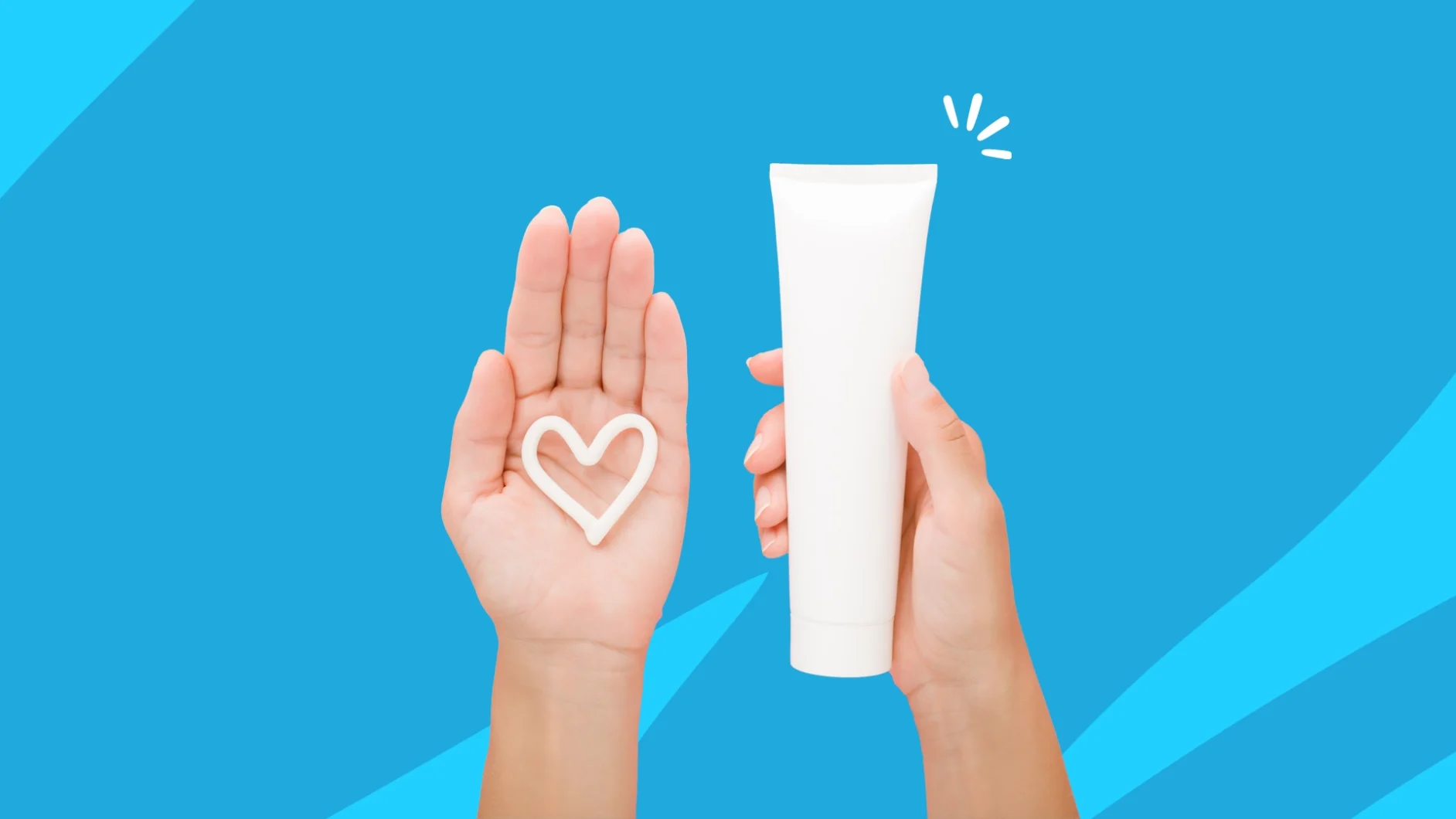Triamcinolone acetonide cream is one of the most popular topical steroids prescribed to treat eczema. If you have this condition, you may have been prescribed this medication and are looking to learn more. Or, perhaps you don’t have a prescription yet and are considering asking a healthcare professional if this medication is a good choice for you.
Either way, you are probably looking for information about the best ways to use this Rx, how long you can use it, and what some potential side effects may be. Here, expert dermatologists answer all your pressing questions.
Is triamcinolone good for eczema?
“Triamcinolone acetonide is one of the most popular topical steroids given for atopic dermatitis, or eczema,” says George Han, MD, Ph.D., a dermatologist at Northwell Health in New Hyde Park, New York. “Its popularity likely stems from the fact that it is quite inexpensive, insurance coverage is almost never an issue, and it comes in the largest size available of any topical steroid—a 454g tub (equivalent to one pound).”
Eczema is an inflammatory skin condition that causes skin irritation, such as patches of dry, scaly, itchy, blistered, or rashed skin. The condition can be extremely uncomfortable and can decrease your quality of life. There are several different types of eczema, and atopic dermatitis is the most well-known one. The terms eczema and atopic dermatitis are often used interchangeably.
Usually, eczema begins in childhood, but it can occur anytime between adolescence and adulthood. The condition is chronic, and while it can be managed, it’s usually not cured. Cases can be mild or severe, and it’s estimated that about 31 million people in the U.S. live with this condition.
One of the primary ways that eczema is treated is with topical steroids, which are anti-inflammatory medications applied to the skin. If you have a mild case of eczema, a low-potency or over-the-counter corticosteroid such as hydrocortisone may be enough to manage the condition. But if your case is more severe, often a higher potency, prescription corticosteroids are needed. Triamcinolone acetonide cream is a common midstrength choice and works as a fluorinated topical steroid. “This means it penetrates a bit deeper into the skin and suppresses more inflammation than a non-fluorinated steroid, like hydrocortisone, would,” Dr. Han says.
Studies have found that triamcinolone acetonide cream is an effective way to manage eczema. For example, a 2023 study published in The Journal of Allergy and Clinical Immunology looked at around 70 prescription topical ointments and creams used to treat dermatitis. Of all the treatments studied, researchers concluded that moderate-potency topical steroids, including triamcinolone acetonide ointment, were among the most effective.
How to use triamcinolone for eczema
Okay, so you have your prescription for triamcinolone. What’s the best way to use it for eczema? Dermatologists share their top tips.
1. Less is more
There’s no need to slather yourself in triamcinolone, and you shouldn’t apply more than you need to the affected area. “A thin layer is enough,” Dr. Han says. “The steroid receptors in the skin actually become saturated, so applying a really thick layer or putting it on many times a day won’t help the problem, but could still lead to more side effects.”
2. Limit use
The dosage for triamcinolone will depend on the strength of the cream and the severity of the condition. Your healthcare provider will tell you how often to use triamcinolone for eczema, but Dr. Han says that triamcinolone shouldn’t be used more than twice daily. Ideally, you don’t want to use it for more than a few weeks at once in the affected area. “I would suggest that people don’t use it for more than a month at a time,” Dr. Han says. “If you need to apply the medicine for so long, or if the rash keeps coming back within a day or two of stopping the medicine, you probably should find another, better option.”
3. Don’t fear it
As much as you want to take precautions and not overuse triamcinolone, says Jennifer Gordon, MD, a dermatologist at Westlake Dermatology in Austin, Texas, you shouldn’t be afraid to use it when needed. “Many people underuse steroids because they are afraid of it, but if there is redness or itch, then you need it and it has a target,” she says. “Don’t fear the steroid, but also make sure you have the appropriate medicine for the area and the patient.”
4. Apply moisturizer
Triamcinolone tends to dry out the skin, so applying moisturizer can be helpful. “I always counsel my patients on a good moisturizer regimen regardless of whether they’re using the medicine,” He recommends putting triamcinolone on first, then your medication—but it won’t make a big difference if you do it the other way around.
5. Store it properly
Triamcinolone should be stored in a cool, dry location, away from harsh sunlight. You should store it at room temperature, ideally between 68 to 77 degrees Fahrenheit.
6. Consider your options
If triamcinolone isn’t working or your symptoms aren’t going away during the recommended timeframe for use, then you should reach out to your provider for alternative options.
“There’s usually a better option than relying on triamcinolone for everyday use,” Dr. Han says. “There are steroids such as fluticasone that are less absorbed into the skin (it’s rapidly inactivated), or there are now prescription non-steroidal topical anti-inflammatory medicines that may be a good option.” For example, Elidel (pimecrolimus) and Protopic (tacrolimus) are topical calcineurin inhibitors approved to treat moderate to severe eczema.
Additionally, your provider may recommend a systemic biologic for atopic dermatitis. The Food and Drug Administration (FDA) has approved dupilumab and tralokinumab for the treatment of atopic dermatitis.
Side effects of triamcinolone for eczema
Side effects of triamcinolone acetonide cream are relatively uncommon, especially if it’s used as directed, according to Dr. Gordon. “The side effects are minimal if you use it correctly,” she says. “It should never make eczema worse unless you have a very rare allergy to it.”
According to the FDA, the following are some potential side effects of triamcinolone creams:
- Itching
- Inflammation and skin irritation
- Burning
- Dryness
- Blisters
- Skin thinning
- Development of stretch marks
- Acne
- Follicular inflammation
- Changes in skin color
- Secondary skin infections
Triamcinolone is not meant to be used on a long-term basis. Usually, it’s used until the eczema flare-up is under control. As such, when used according to your provider’s instructions, it’s rare to cause any long-term effects. However, high doses and prolonged use of this type of medication may cause serious side effects, including:
- Endocrine and metabolic issues like hyperglycemia, elevated cholesterol, adrenal suppression, and weight gain
- Cardiovascular issues like elevated blood pressure (hypertension), heart failure, and coronary artery disease
- Skin issues like atrophy, erosion, issues with wound healing, hair loss, and excessive hair growth
- Eye issues like cataracts and glaucoma
- Psychiatric problems like depression, mood swings, and anxiety
- In rare cases, may be linked to the development of Cushing disease
Risks of using triamcinolone for eczema
Overall, experts agree that there are few risks to using triamcinolone for eczema. “In general, it is a very safe medicine,” Dr. Gordon says. Just use caution when using it in thin skin areas, such as the neck and groin. You should also never use it on your face without a healthcare provider’s guidance. “If you overuse it or apply it to the wrong area, you might experience acne, thinning of the skin, increased vascularity, and potentially other irreversible skin changes,” Dr. Gordan says.
Most people can use triamcinolone for eczema. You should tell a healthcare professional if you’ve ever had an allergic reaction to triamcinolone, such as hives or other skin reactions. You should also tell your healthcare provider about other medications or supplements you are taking.
There is limited research on the safety of triamcinolone during pregnancy or breastfeeding; you can discuss risks and benefits with your healthcare provider. Animal studies have suggested that triamcinolone may cause harm to an unborn baby and should only be used if the benefits outweigh the risks.
One population that should rarely use triamcinolone is infants. “We try to avoid using it on babies,” says Raman Madan, MD, chief of dermatology at Glen Cove Hospital in Glen Cove, New York. “It does not mean it cannot be used, but we limit the amount of time. Typically, for adults, I say use it twice a day for two weeks on the body, but with small children, I limit it to a few days max.”
The bottom line: Triamcinolone is well tolerated when used as directed
Topical triamcinolone is a popular option for eczema and atopic dermatitis, and with good reason. It’s one of the most effective treatments for the condition. It’s also generally well tolerated. When used for a few weeks, it’s unlikely to cause adverse effects. Most people find it to be a powerful tool for helping to manage eczema and other skin conditions that cause inflammation and irritation.
If you have any further questions about using triamcinolone to help manage your eczema, reach out to your primary care provider or dermatologist. They can also give you tips about the best way to use it, along with additional options for treating your eczema.
Sources
- Atopic dermatitis, National Institute of Arthritis and Musculoskeletal and Skin Diseases
- What is eczema?, National Eczema Association
- Eczema: Steroids and other topical medications, Institute for Quality and Efficiency in Health Care (2017)
- Topical treatments for atopic dermatitis (eczema): Systematic review and network meta-analysis of randomized trials, Journal of Allergy and Clinical Immunology (2023)
- Which skin creams are most effective for eczema?, Harvard Health Publishing (2023)
- Kenalog creams: Rx only, FDA
- Long-term side effects of glucocorticoids, Expert Opinion on Drug Safety (2016)
- Safety of topical corticosteroids in pregnancy, Cochrane Database of Systematic Reviews (2015)
- Triamcinolone acetonide cream, DailyMed
- Guidelines of care for the management of atopic dermatitis in adults with phototherapy and systemic therapies, Journal of the American Academy of Dermatology (2023)











